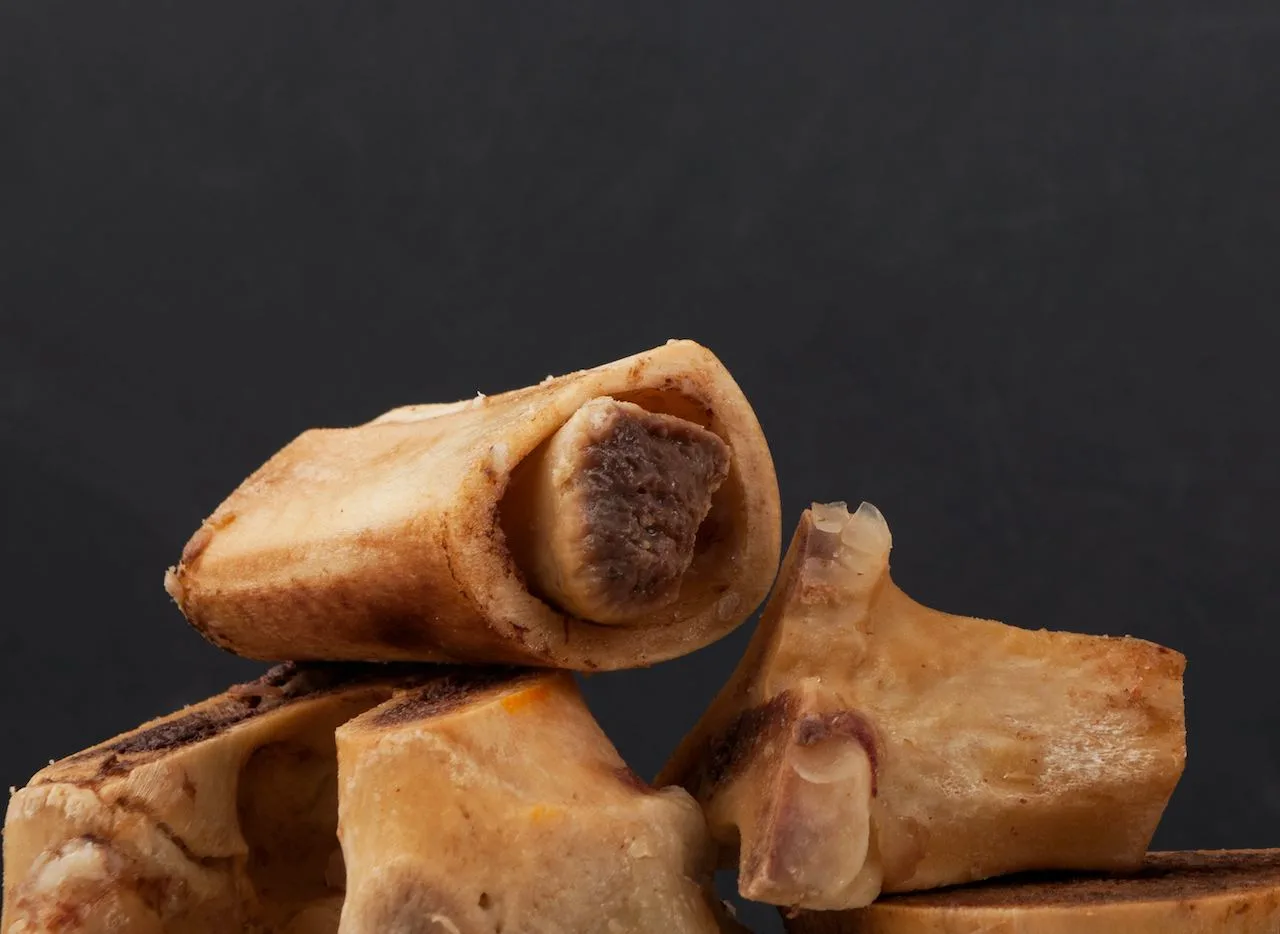Bone broth for dogs is a nutrient-rich liquid that is cooked from raw or boiled bones over low heat for a long time. This oily broth contains many amino acids, vitamins and minerals – it is a tasty and rich source of energy. However, many dog owners are unsure how to prepare it for their pups. In this article we will go over everything you have to know about bone broth for dogs!
Digestible and healthy bone broth for dogs
Bone broth is particularly suitable for older dogs, because it is very easy to digest and beneficial for the intestines. But the tasty dish is a good choice for dogs at any age.
Commercially produced soup cubes or granules from the supermarket cannot be compared to a homemade broth. Finished products are produced and processed over high heat in a much shorter time, which contains a whole range of useless or unhealthy ingredients. They can also contain some spices or ingredients that are bad or even toxic for our pets.
But boiled broth achieves a higher nutrient density, nothing is removed or added: it is pure and completely natural.
Further advantages of bone broth
Bone broth is an extremely valuable source of nutrients. It has traditionally been used in humans and animals to treat digestive problems. Healthy dogs receive a high-quality and balanced diet with a cup of broth daily with their regular meal. (comquately less for small breeds).
Bone broth is rich in nutrients such as amino acids, but also vitamin C, vitamin D, vitamin K, iron, potassium, calcium, glucosamine and more.
This is how broth is cooked properly
Bone broth is extremely easy and inexpensive to make! All you need is water, a splash of apple cider vinegar, a soup pot and enough bones to cover the bottom of the pot. Boiled bones can also be used, but fresh bones achieve the best results. Raw duck or turkey necks, beef marrow bones, chicken back pieces or rinds with plenty of meat, connective tissue and fat are ideal for broth.
Where can you buy good bones? You can ask the butcher for slaughterhouse waste, good customers often get a bag full for free with their purchase.
If your dog has an allergy to certain protein, such as beef, it is easy to fall back on other meat bones such as lamb, turkey, moose, horse, ostrich, rabbit, deer. Especially a lot of collagen contain chicken feet.
You can also use pig bones, but make sure to cook them throughly. If you have no apple cider vinegar in the house, you can replace it with other vinegar or lemon juice. The acid dissolves the nutrients from the bones so that they get into the broth. The longer the broth simmers, the more nutrients are extracted. Optional ingredients such as parsley, turmeric, seaweed, carrots and raw liver can be added during cooking. But all ingredients have to be dog friendly. That’s why you can’t use ingredients such as onions and garlic. Ideally, the soup cooks for the whole night.
For this type of dish it’s best to use modern slow cookers. After two hours of fast cooking, the temperature is lowered. Sometimes the soup will have a jelly like consistency. Pressure cookers work more time-saving. Either way, the longer you cook the broth the better is. But whichever method you choose will be fine.
How to store bone broth for dogs
Once the bone broth is ready, take the bones out of the pot and pluck the meat. Extremely soft bones can be fed immediately. If you own a meat grinder, you can spin the bones – the puree is a calcium-rich ingredient for homemade dog biscuits – or the mousse is mixed under the food.
For overweight dogs, it is recommended to remove the fat. This is best done after cooling down. But be careful, never poured off hot fat into the spout, because grease lumps clog the drain pipe. So it’s better to put it in a plastic bag and put it in the trash. After cooling, the broth can be frozen. Meals for small dogs can be portioned into ice cube bags or bowls, for larger breeds you take appropriate plastic cups or the like. Of course, glasses can also be filled with screw caps.
The cooked meat can be added to the broth or fed with meals. Vegetable inlays tend to ferment, so broth (even if it is in screw jars) should always be stored in the refrigerator.

